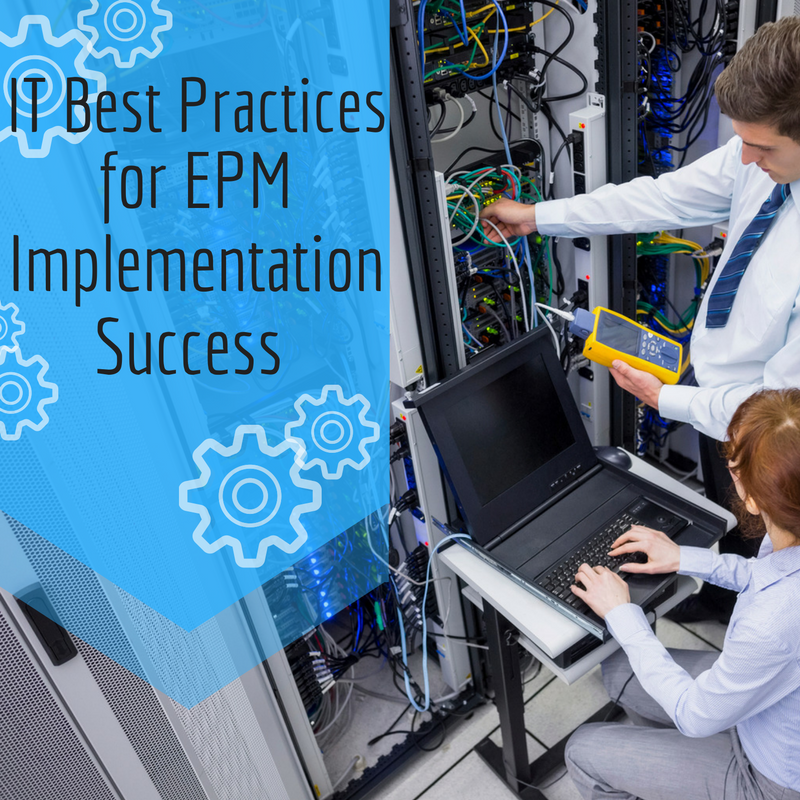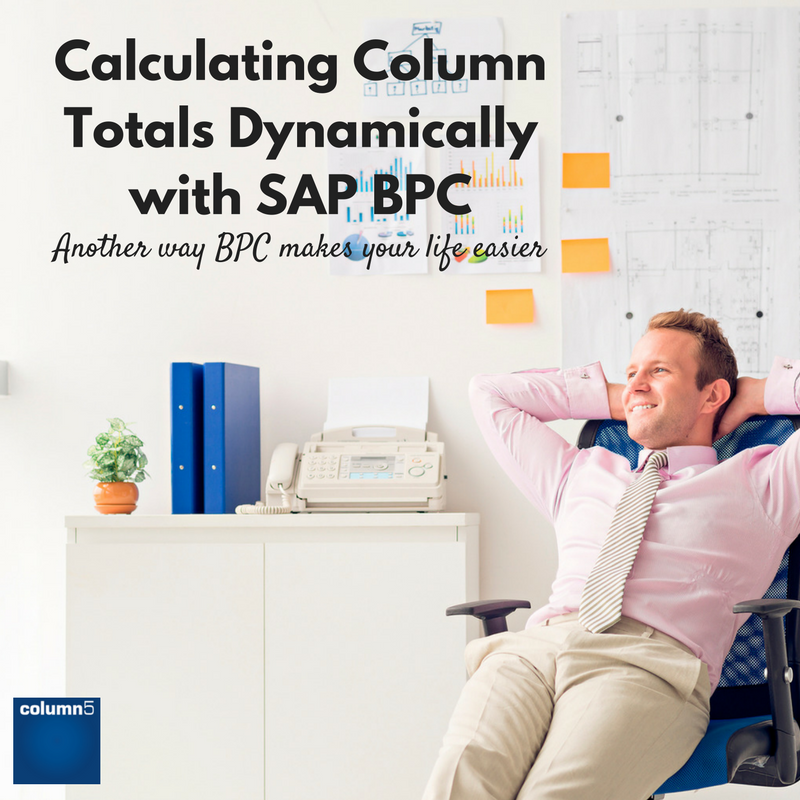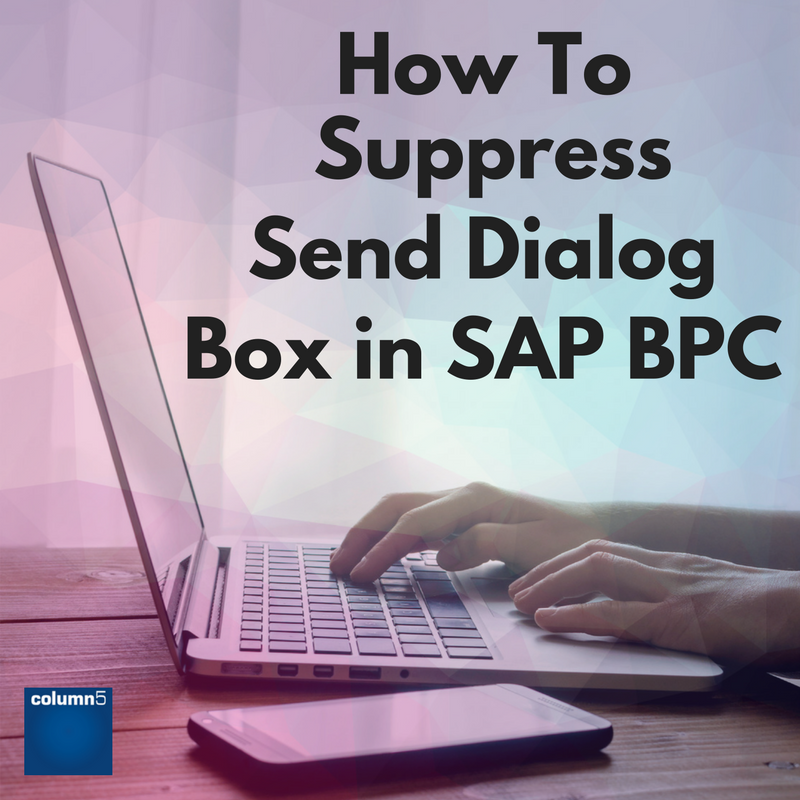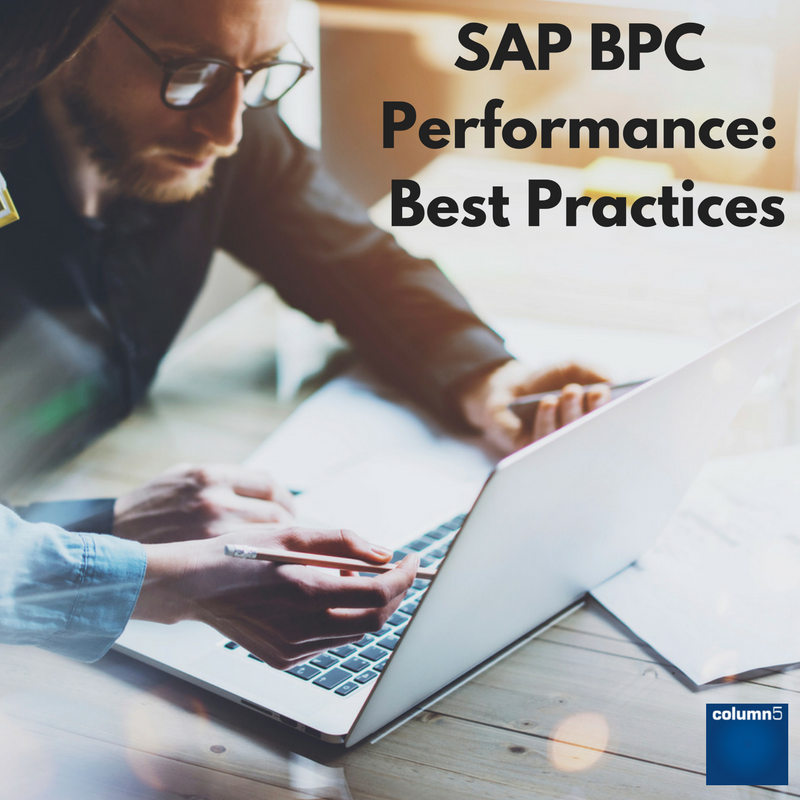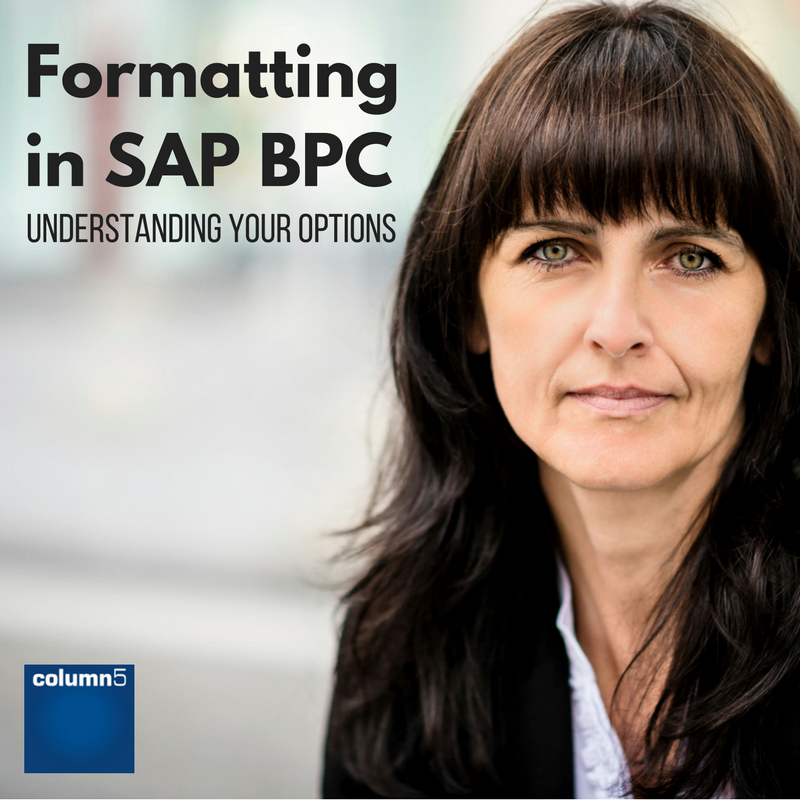This is the second part of the original post of 11 Dirty Secrets of EPM Projects.
"I thought for Column5's 11th birthday, I'd give our more than 1000 blog readers a gift! I’ve wrapped it up and called in the 11 'dirty secrets' of EPM projects. I know this is heresy to disclose some of these EPM professional services insider secrets, but I care more about you being successful than I worry about the flak I will inevitably get by letting you in on these secrets."
Let’s continue:
Dirty Secret #6: Systems inadvertently create dependency on 3rd party
Topics:
Enterprise Performance Management (EPM),
Implementation,
best practices for epm
Though the actual market size may vary, a reasonable estimation states that throughout the world more than $4 billion is spent annually on EPM consulting alone. Yet, EPM projects often fail to return positive value to those investing in them. Why is this outcome so prevalent with this technology solution in particular? I thought for Column5's 11th birthday, I'd give our more than 1000 blog readers a gift! I’ve wrapped it up and called in the 11 'dirty secrets' of EPM projects.
I know this is heresy to disclose some of these EPM professional services insider secrets, but I care more about you being successful than I worry about the flak I will inevitably get by letting you in on these secrets. Let’s begin:
Topics:
Enterprise Performance Management (EPM),
Implementation,
best practices for epm
If you follow best practices for SAP implementation and use, whether it be BPC, Disclosure Management, ECC,
HANA, ABAP, or many others, you will be successful in quantifying the benefits from the suite of products you choose. Our perspective is that there are no inherently “bad” SAP products, just poor implementation that can make your product use more stressful than it needs to be.
Topics:
Excel,
EPM Maturity,
Performance,
Implementation,
best practices for epm
Need to calculate a grand total dynamically? Shifting of Local Members giving you a headache? I previously used Indirect() functions, but I discovered with larger reports this put a drag on reporting performance. To sum from the first report column to the last report column I was using something like this =SUM(EPMPOSITION(1):INDIRECT(ADDRESS(ROW(),COLUMN()-1))), which is not considered best practice but I got results!
The SAP definition: “EPMALLMEMBERS is used to perform a calculation (such as sum or average) on all the members displayed in a row or column axis, whether the axis contains one or several dimensions”
HOW? Here are some examples:
Topics:
Best Practices,
Excel,
Training,
Performance
You may have noticed in the news recently that many large multinationals have been the subject of some rather intense media and public scrutiny regarding the amount of tax they pay in certain countries. As media pressure and public anger has escalated, governments and regulators have been compelled to take action to improve the visibility of where companies make their profits and where they pay their taxes to help ensure that they pay a fair share to the coffers of the national governments.
It had become obvious to governments that the underlying issues could not be addressed by unilateral regulation and instead need a cohesive joined up approach to tackle tax base erosion and profit shifting through transfer pricing arrangements between multinational subsidiaries. The OECD in conjunction with the G20 countries devised an action plan which includes the need for greater levels of disclosure from multinational enterprises (MNEs) in relation to the countries where their economic activities occur and amounts of tax they pay in each jurisdiction. This has resulted in the creation of the Country by Country (CbC) reporting standards by the OECD that are being implemented through the local tax governing bodies of all OECD members.
The OECD CbC regime requires the following reporting on a country by country basis;
Aggregate country wide information relating to the global allocation of
* Income;
* Taxes paid;
* and; other indicators of economic activity (stated capital, accumulated earnings, tangible assets, no of employees)
Topics:
Center of Excellence,
Process Improvement,
Thought Leadership,
best
BPC has always been a flexible tool with many “hooks” through Excel and the database layer enabling all manner of customizations to increase usability to customers’ exact specifications. The risk of customizing is the potential of that customization being an impediment to an upgrade. One popular access point provided by SAP/OutlookSoft was the “MNU_Commands” hook.
Topics:
Thought Leadership,
BPC (Business Planning & Consolidation),
best
SAP has a portfolio of Consolidation solutions with their own unique positioning and the SAP Financial Consolidation (FC) software is an enterprise solution offered to companies looking to improve and speed up their financial close – without sacrificing quality control and compliance.
FC became part of the SAP EPM portfolio through the acquisition of BusinessObjects in 2007. BusinessObjects itself acquired the French software vendor Cartesis who originally marketed Financial Consolidation as Cartesis Magnitude. With a large and loyal customer base throughout Europe and Japan, FC has a particularly strong focus on statutory consolidation requirements within large multinational organisations that have complex and evolving corporate structures across multiple reporting standards (e.g. IFRS and local GAAP).
Topics:
Best Practices,
Analytics,
Consolidation,
Financial Close,
Value
Column5 and I have seen a lot of things over the years in the EPM space. I have been working on the technical side of BPC MS since 2000, BPC NW since 2007, and BPC NW on HANA since 2012, having implemented it around the world over 1000 times.
I have a dream to, at some point, write a book of everything I have seen over the years. If investors knew what was really going on deep within some of the world’s datacenters, I think some heads would be rolling! I won’t mention ANY NAMEs but some of them are the who’s who of worldwide companies!
I keep running into the same thing over and over and over again, whether it is hosted by a 3rd party or implemented on-site at a client. The challenges start with a common element that is surprisingly easy to fix: No one seems to take care of the servers and technology!
Topics:
Best Practices,
Performance,
BPC (Business Planning & Consolidation)
This blog is part of a series on reporting techniques to help you get more value from SAP BPC.
DROP-DOWN LISTS help make a worksheet more efficient by provided a controlled list of options that make the report or input template respond to preconfigured options.
To create the list use Excel’s Data Validation tool. We are going to take this a step further by populating the list with EPM reports on a ‘List’ tab within the workbook. In the snapshot below we are using drop-down list for Company, Cost Centre, Program, and Account. Each drop-down list will have its own report to populate the list.
COST CENTER LIST: A list of cost centers is created using fixed members that had been input. In this example, the dropdown has a friendly label that is the result of concatenating ID & Description, but the report will only use the dimension ID’s referenced on the list tab by using Excel’s VLOOKUP function to match the concatenated friendly label to the ID from the right row.
Topics:
Best Practices,
Excel,
Enterprise Performance Management (EPM),
best
The formatting strategy chosen for a report or input schedule is one of the most important decisions made in development because it influences performance, complexity and the “fun factor” for development. I say this with humor because the report may take 4 hours to build and 8 hours to format! There isn’t room enough to go into all aspects of formatting in detail, however the understanding of choices we have is critical and can certainly influence the overall life cycle (maintenance and productivity).
The EPMFormatting sheet is used to format dynamic reports and input templates. It is an Excel sheet that can be copied and changed for multiple worksheets and reports. Dynamic formatting means the formats are applied to levels of a hierarchy, types of members or column and page axis dimensions.
Topics:
Best Practices,
Excel,
Data,
best






